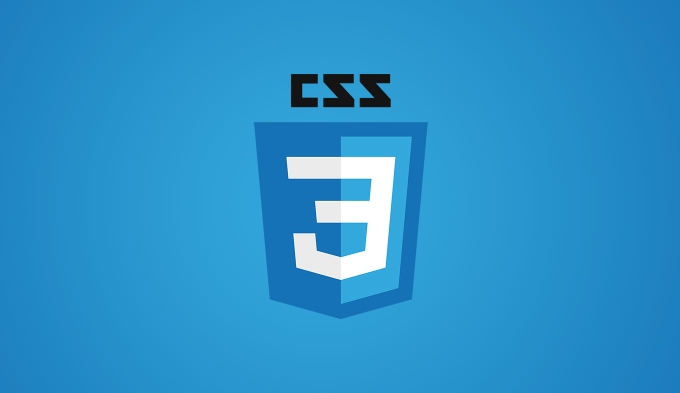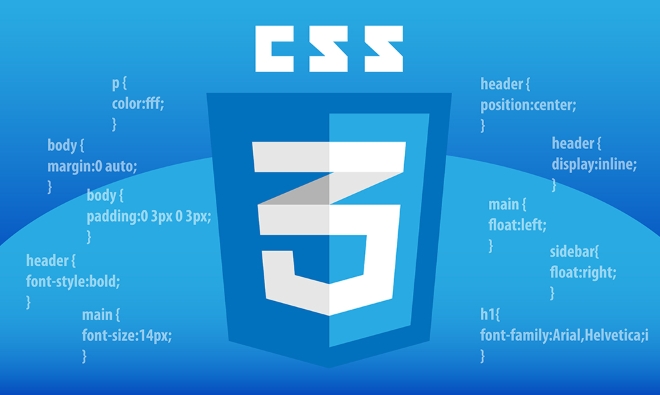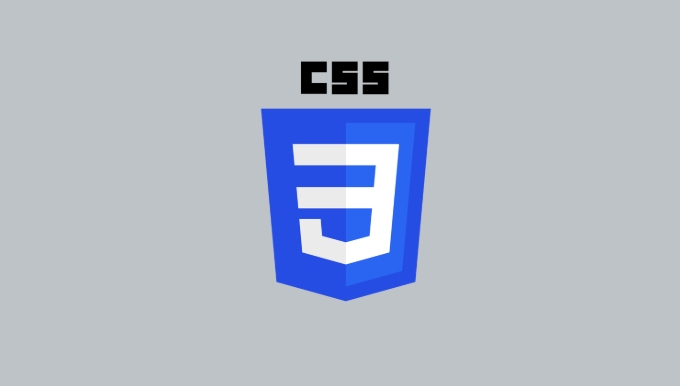Explain property inheritance in CSS
Jul 15, 2025 am 01:25 AMIn CSS, property inheritance affects how styles are passed from parent elements to children. Some properties like color and font-family inherit by default, applying to all nested elements unless overridden. Non-inherited properties such as border, margin, and padding must be set explicitly. To check if a property inherits, refer to MDN documentation, test in dev tools, or use property: inherit manually. To prevent inheritance, use initial, unset, or revert values. Keep inheritance predictable by using it to reduce redundancy, knowing which properties don’t inherit, and resetting when needed. Understanding inheritance helps avoid quirks and speeds up debugging, especially with third-party libraries.

When it comes to styling web pages, property inheritance in CSS is a fundamental concept that affects how styles are passed down from parent elements to their children. It might seem subtle at first, but understanding it can save you time and prevent confusion when your styles aren’t showing up the way you expect.

What Does It Mean for a Property to Inherit?
In CSS, some properties are inherited by default — meaning when you set them on a parent element, they automatically apply to its child elements unless explicitly overridden. For example, if you set color or font-family on a <div>, all text inside that <code><div>, including nested elements like <code><p></p> or <span></span>, will use those styles unless you change them.
Not all properties inherit, though. Things like border, margin, or padding don’t pass down automatically. That’s why if you want consistent spacing or borders across elements, you usually have to set them individually or use a selector that targets multiple elements.

How to Check If a Property Inherits
If you’re ever unsure whether a certain CSS property inherits, here’s what you can do:
- Check MDN documentation — Each CSS property page clearly states whether it's inherited.
- Test it out — Apply the property to a parent, then look at a child element in your browser’s dev tools to see if it picked up the same value.
-
Use
inheritmanually — Even for non-inherited properties, you can force a child to take the parent’s value by settingproperty: inherit.
This can be especially useful when working with themes or trying to keep things consistent without repeating yourself.

When You Want to Prevent Inheritance
Sometimes, you don’t want child elements to pick up styles from their parents. In those cases, you can either override the style directly or use one of these values:
-
initial– resets the property to its default browser value -
unset– acts likeinheritif the property normally inherits, otherwise behaves likeinitial -
revert– rolls back to the browser’s default stylesheet (handy for undoing frameworks or resets)
For instance, if a link inside a styled paragraph ends up inheriting an unwanted color, just set color: initial or specify a different one directly on the <a></a> tag.
Keep It Predictable Without Overdoing It
It’s easy to get carried away trying to control every inherited value, but most of the time, letting natural inheritance work is helpful and efficient. Just remember:
- Use inheritance to reduce redundancy
- Know which properties don’t inherit by default
- Don’t hesitate to reset or override when needed
You’ll probably run into inheritance-related quirks more than once — especially when using third-party libraries — so having a clear idea of how it works will make debugging faster and smoother.
Basically, that’s how property inheritance in CSS works — simple, but powerful when used right.
The above is the detailed content of Explain property inheritance in CSS. For more information, please follow other related articles on the PHP Chinese website!

Hot AI Tools

Undress AI Tool
Undress images for free

Undresser.AI Undress
AI-powered app for creating realistic nude photos

AI Clothes Remover
Online AI tool for removing clothes from photos.

Clothoff.io
AI clothes remover

Video Face Swap
Swap faces in any video effortlessly with our completely free AI face swap tool!

Hot Article

Hot Tools

Notepad++7.3.1
Easy-to-use and free code editor

SublimeText3 Chinese version
Chinese version, very easy to use

Zend Studio 13.0.1
Powerful PHP integrated development environment

Dreamweaver CS6
Visual web development tools

SublimeText3 Mac version
God-level code editing software (SublimeText3)

Hot Topics
 What is 'render-blocking CSS'?
Jun 24, 2025 am 12:42 AM
What is 'render-blocking CSS'?
Jun 24, 2025 am 12:42 AM
CSS blocks page rendering because browsers view inline and external CSS as key resources by default, especially with imported stylesheets, header large amounts of inline CSS, and unoptimized media query styles. 1. Extract critical CSS and embed it into HTML; 2. Delay loading non-critical CSS through JavaScript; 3. Use media attributes to optimize loading such as print styles; 4. Compress and merge CSS to reduce requests. It is recommended to use tools to extract key CSS, combine rel="preload" asynchronous loading, and use media delayed loading reasonably to avoid excessive splitting and complex script control.
 External vs. Internal CSS: What's the Best Approach?
Jun 20, 2025 am 12:45 AM
External vs. Internal CSS: What's the Best Approach?
Jun 20, 2025 am 12:45 AM
ThebestapproachforCSSdependsontheproject'sspecificneeds.Forlargerprojects,externalCSSisbetterduetomaintainabilityandreusability;forsmallerprojectsorsingle-pageapplications,internalCSSmightbemoresuitable.It'scrucialtobalanceprojectsize,performanceneed
 What is Autoprefixer and how does it work?
Jul 02, 2025 am 01:15 AM
What is Autoprefixer and how does it work?
Jul 02, 2025 am 01:15 AM
Autoprefixer is a tool that automatically adds vendor prefixes to CSS attributes based on the target browser scope. 1. It solves the problem of manually maintaining prefixes with errors; 2. Work through the PostCSS plug-in form, parse CSS, analyze attributes that need to be prefixed, and generate code according to configuration; 3. The usage steps include installing plug-ins, setting browserslist, and enabling them in the build process; 4. Notes include not manually adding prefixes, keeping configuration updates, prefixes not all attributes, and it is recommended to use them with the preprocessor.
 What are the key differences between inline, block, inline-block, and flex display values?
Jun 20, 2025 am 01:01 AM
What are the key differences between inline, block, inline-block, and flex display values?
Jun 20, 2025 am 01:01 AM
Choosing the correct display value in CSS is crucial because it controls the behavior of elements in the layout. 1.inline: Make elements flow like text, without occupying a single line, and cannot directly set width and height, suitable for elements in text, such as; 2.block: Make elements exclusively occupy one line and occupy all width, can set width and height and inner and outer margins, suitable for structured elements, such as; 3.inline-block: has both block characteristics and inline layout, can set size but still display in the same line, suitable for horizontal layouts that require consistent spacing; 4.flex: Modern layout mode, suitable for containers, easy to achieve alignment and distribution through justify-content, align-items and other attributes, yes
 How can you animate an SVG with CSS?
Jun 30, 2025 am 02:06 AM
How can you animate an SVG with CSS?
Jun 30, 2025 am 02:06 AM
AnimatingSVGwithCSSispossibleusingkeyframesforbasicanimationsandtransitionsforinteractiveeffects.1.Use@keyframestodefineanimationstagesforpropertieslikescale,opacity,andcolor.2.ApplytheanimationtoSVGelementssuchas,,orviaCSSclasses.3.Forhoverorstate-b
 What is the conic-gradient() function?
Jul 01, 2025 am 01:16 AM
What is the conic-gradient() function?
Jul 01, 2025 am 01:16 AM
Theconic-gradient()functioninCSScreatescirculargradientsthatrotatecolorstopsaroundacentralpoint.1.Itisidealforpiecharts,progressindicators,colorwheels,anddecorativebackgrounds.2.Itworksbydefiningcolorstopsatspecificangles,optionallystartingfromadefin
 What is the scope of a CSS Custom Property?
Jun 25, 2025 am 12:16 AM
What is the scope of a CSS Custom Property?
Jun 25, 2025 am 12:16 AM
The scope of CSS custom properties depends on the context of their declaration, global variables are usually defined in :root, while local variables are defined within a specific selector for componentization and isolation of styles. For example, variables defined in the .card class are only available for elements that match the class and their children. Best practices include: 1. Use: root to define global variables such as topic color; 2. Define local variables inside the component to implement encapsulation; 3. Avoid repeatedly declaring the same variable; 4. Pay attention to the coverage problems that may be caused by selector specificity. Additionally, CSS variables are case sensitive and should be defined before use to avoid errors. If the variable is undefined or the reference fails, the fallback value or default value initial will be used. Debug can be done through the browser developer
 CSS tutorial focusing on mobile-first design
Jul 02, 2025 am 12:52 AM
CSS tutorial focusing on mobile-first design
Jul 02, 2025 am 12:52 AM
Mobile-firstCSSdesignrequiressettingtheviewportmetatag,usingrelativeunits,stylingfromsmallscreensup,optimizingtypographyandtouchtargets.First,addtocontrolscaling.Second,use%,em,orreminsteadofpixelsforflexiblelayouts.Third,writebasestylesformobile,the






